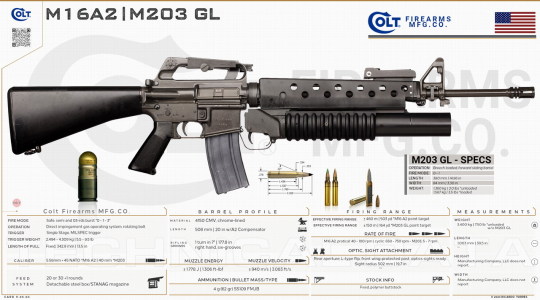#m16a2
Explore tagged Tumblr posts
Text

ArmaLite AR-15 and Derivatives
(This is Actually Serves for My Remastered CC I Made back in 2022. It Supposed to post on 2nd February but hell got delayed for a Week and glad I Finally Having Chance to upload it. Enjoy! Anyway in this thread The CC Models are Mostly Remastered into Great Quality and Got Fixed. So In Case you already Downloading My Stuff. You may Need to Redownload it again since this gonna be A Final Version)
💥DOWNLOAD💥
In the mid-1950s, the U.S. Department of Defense sought a new assault rifle for its infantry, influenced by the adoption of the AK-47 and the U.S. withdrawal from the FAL program. The Springfield Armory's M14, a derivative of the M1 Garand chambered in 7.62×51mm NATO, was adopted in 1958 but soon proved inadequate in Vietnam.
Around the same time, Eugene Stoner developed the AR-10, a 7.62×51mm rifle, but its design struggled with the cartridge's recoil. When the U.S. military switched to 5.56×45mm, Stoner adapted the AR-10 into the AR-15, which ArmaLite proposed to the Army in 1959 but was initially rejected. In 1960, the Air Force, led by Gen. Curtis LeMay, ordered 6,000 AR-15s. By 1965, after proving reliable in combat, the Army adopted it as the M16, with the M16A1 in service until 1984. Before That.. Some Screenshoot I Made Thank you For @chloegamesbroficial For Inspiration! Nice Work Sis!

✨ORIGINAL M16 FAMILY
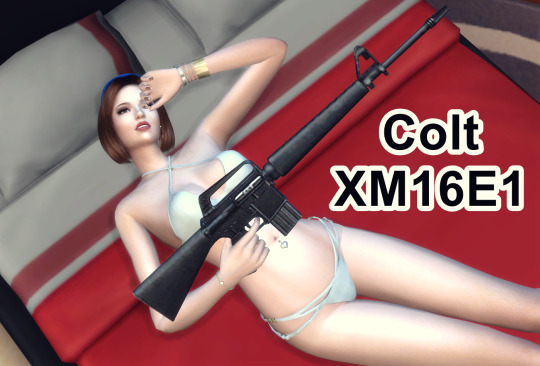
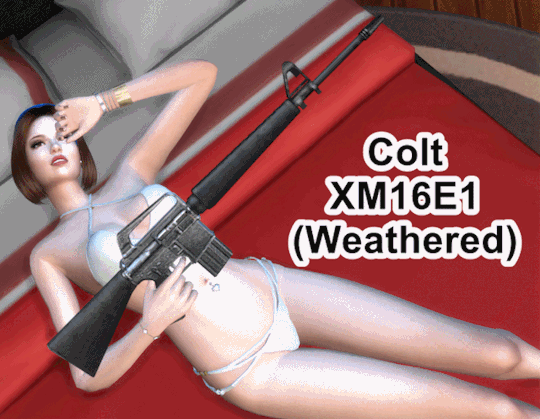
COLT XM16E1
The Progenitor Of M16 Rifle Series. The one who started it all. The XM16E1 was the first true military-issued M16 variant and played a key role in transitioning the U.S. Army from the M14 Battle Rifle to a lightweight, high-rate-of-fire assault rifle. Despite its early flaws, the refinements made in the M16A1 helped solidify the M16 family as a standard U.S. service rifle for decades. (Thank you for @honeyssims4 For Adorable Pose!)
Key Features of the XM16E1:
Forward Assist: Unlike the initial AR-15 and early M16 models, the XM16E1 introduced a forward assist on the right side of the receiver to manually ensure the bolt was fully locked. This was a response to reliability concerns, though Stoner himself opposed its necessity.
Three-Prong Flash Hider: It retained the three-prong flash suppressor, which was later replaced with a birdcage-style suppressor on the M16A1 due to durability issues (the prongs could snag on vegetation).
Chrome-Lined Chamber Issue: Early XM16E1 rifles lacked chrome-lined chambers, leading to frequent malfunctions when used in Vietnam's humid jungle conditions. Fouling and corrosion contributed to "failure to extract" malfunctions, which were later addressed in the M16A1 by adding a chrome-lined chamber and barrel.
Full Auto & Semi-Auto Selector: The rifle featured a selector switch for semi-automatic and fully automatic firing modes.
Early Vietnam Deployment: The XM16E1 was issued to U.S. troops in Vietnam around 1965 and was the first Army-standardized version of the M16 before being officially designated the M16A1 in 1967.
Problems & Fixes:
Ammunition Issue: The original 5.56×45mm M193 rounds used ball powder instead of extruded powder (as originally intended), leading to excessive fouling and jamming.
Cleaning Kits & Training: Many soldiers were not initially issued cleaning kits or proper maintenance instructions, worsening the reliability issues.
M16A1 Upgrade: The XM16E1 was formally redesignated as the M16A1 in 1967, incorporating a chrome-lined chamber and barrel, improved buffer system, and closed-end flash suppressor to resolve its issues.
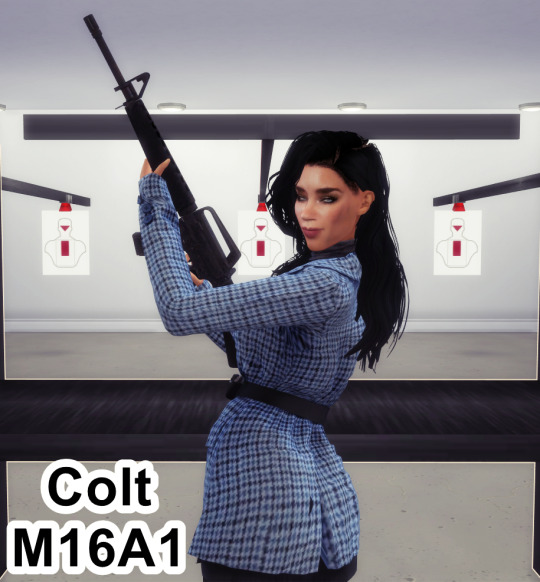
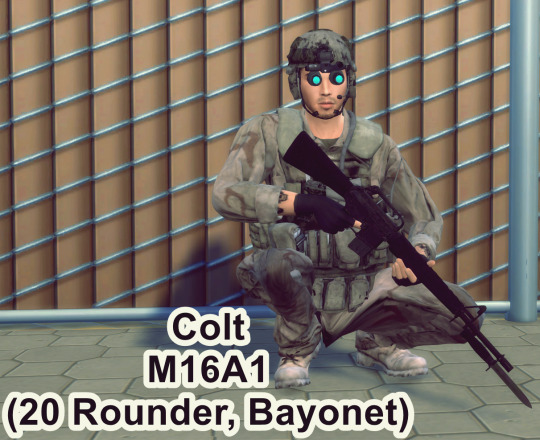

COLT M16A1
The M16A1 was the first fully standardized M16 variant adopted by the U.S. military in 1967, replacing the XM16E1 and improving upon its shortcomings. It became the primary service rifle for U.S. forces during the Vietnam War and remained in widespread use until the 1980s. (Thank you For @plazasims For "Cliff Unger" Uniform!)
Key Features & Improvements Over XM16E1:
Chrome-Lined Chamber & Barrel – Addressed the fouling and corrosion issues that plagued the XM16E1 in Vietnam's humid environment.
Birdcage Flash Hider – Replaced the three-prong flash suppressor, which was prone to bending and snagging on vegetation.
Forward Assist – Retained from the XM16E1, allowing soldiers to manually close the bolt if needed.
Reinforced Buttstock & Pistol Grip – Made from stronger polymer to prevent cracking.
New Buffer System – Helped reduce felt recoil and improve reliability in automatic fire.
30-Round Magazine Compatibility – Originally issued with 20-round magazines, but later compatible with the more practical 30-round STANAG magazines.
Weight & Length – Weighed around 3.9 kg (8.6 lbs) loaded and measured 986 mm (39 inches) in length, making it much lighter than the M14 it replaced.
Combat Use:
Vietnam War (1967–1975) – Saw extensive use, replacing the heavier M14. Soldiers appreciated its lighter weight and high fire rate, though early reliability issues due to poor maintenance training and improper ammunition caused setbacks.
Post-Vietnam Conflicts – Used in Operation Just Cause (Panama, 1989) and by allied forces worldwide into the 1990s.
Foreign Military Use – Many U.S. allies adopted surplus M16A1s, with some still in limited use today.
Replacement & Legacy:
By the mid-1980s, the M16A2 replaced the M16A1, introducing a heavier barrel, burst-fire mode, and improved sights. However, the M16A1 remains one of the most widely produced and battle-proven rifles in U.S. history, influencing modern designs like the M4A1 and civilian AR-15 variants.

COLT M16A2/M16A3
The M16A2 is an upgraded version of the M16A1, featuring a longer stock, improved pistol grip, reinforced carry handle, and a more durable round handguard. It introduced a three-round burst mode instead of full-auto M16A3, Variant that Issued for United States Navy Having A Full Auto Configuration like Old M16A1. The rifle also had a heavier barrel for increased durability and accuracy.
The M16A2 saw combat in Operation Just Cause (Panama), the Gulf War, and the Bosnian War. It later served as a reserve rifle in Afghanistan and Iraq and remains a popular service weapon for military and police forces worldwide.
M16A2 (1983 – Standard Issue Upgrade)
Key Features & Improvements Over M16A1:
Stronger Barrel – Heavier profile for improved accuracy and heat resistance.
3-Round Burst Mode – Replaced full-auto with safe-semi-burst to conserve ammo.
New Rear Sight – Adjustable for windage and elevation, improving long-range accuracy.
Longer Stock & Reinforced Grip – More ergonomic design for stability.
Round Handguards – More durable and symmetrical, easier to grip.
Flash Hider Change – Birdcage closed at the bottom to prevent dust kick-up.
Improved Ammunition – Designed for the 5.56×45mm M855 "Green Tip" round, offering better penetration.
Combat History:
First issued in 1983 and widely used in Operation Just Cause (Panama, 1989) and Desert Storm (1991).
Phased out in the 2000s as the M16A4 and M4 Carbine became standard.
M16A3 (1990s – Full-Auto Navy Variant)
How It Differs from the M16A2:
Retains Full-Auto – Uses safe-semi-full auto, unlike the M16A2’s 3-round burst.
Used by U.S. Navy and SEALs – Needed for maritime operations and boarding teams.
Physically Similar to the M16A2 – No other major differences besides the fire control group.
Limited Use & Replacement:
Never widely adopted outside of Navy units and special forces.
Eventually replaced by the M16A4 and M4A1 due to modularity and compact size needs.

COLT M16A4
The M16A4 is the final standard-issue variant of the M16 rifle family, introduced in the late 1990s to replace the M16A2. It was widely used by the U.S. Marine Corps and some Army units, particularly during the Iraq and Afghanistan wars. The M16A4 was the last major evolution of the M16 series, transitioning the rifle into a more modular, optics-friendly platform.
Key Features & Improvements Over M16A2:
Flat-Top Receiver with Picatinny Rail – Allowed for easy mounting of optics, scopes, and accessories, unlike the fixed carry handle of the M16A2.
Removable Carry Handle – Featured adjustable iron sights but could be detached for mounting optics like the ACOG (widely used by U.S. Marines).
Three-Round Burst Mode – Retained the safe-semi-burst firing modes from the M16A2 (no full-auto, unlike the M16A3).
Knight’s Armament M5 RAS (Rail Adapter System) – Allowed attachment of foregrips, lasers, flashlights, and grenade launchers (M203/M320).
Heavy Barrel – Improved accuracy and heat resistance for sustained fire.
30-Round STANAG Magazine – Standardized across NATO forces.
Combat Use & Replacement:
Widely used in the Iraq War (2003–2011) and Afghanistan War (2001–2021) by U.S. Marines.
Phased out in favor of the M4A1 carbine, which offered greater mobility in urban warfare.
Still in use by Marine reserves and allied forces worldwide.
🎈CARBINE FAMILY
The AR-15 carbine family includes a wide range of compact, lightweight rifles derived from the original AR-15/M16 platform. Carbines typically have shorter barrels (14.5 inches or less) and are designed for mobility, versatility, and close-quarters combat (CQC).they has evolved into one of the most widely used and modular weapon platforms worldwide, serving military, law enforcement, and civilian shooters.
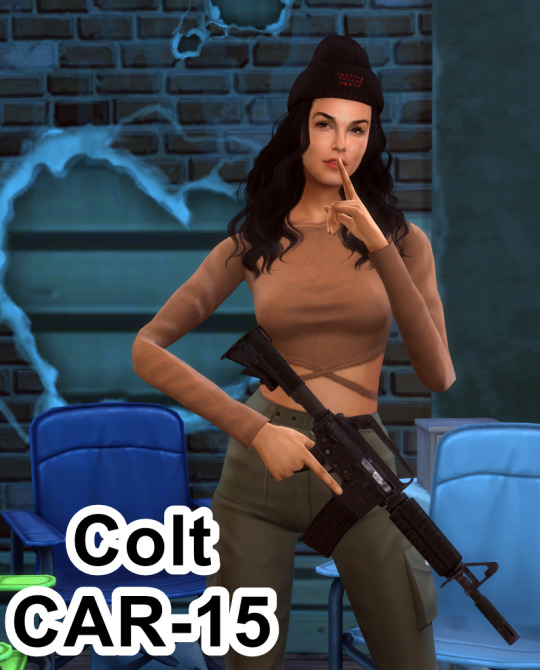
COLT CAR-15 (XM177E2 Model)
The First Of The Family The Colt CAR-15 was a family of compact, lightweight rifles and carbines developed in the 1960s as shortened versions of the M16/AR-15 platform. The name CAR-15 ("Colt Automatic Rifle-15") was originally an umbrella term for Colt’s modular rifle system, but it later became associated specifically with short-barreled carbines.
Key Features of XM177E2 ("Colt Commando")
Most famous CAR-15 carbines Variant, issued to MACV-SOG, Navy SEALs, and Green Berets in Vietnam.
11.5-inch barrel for better velocity and reliability.
Iconic Moderator (flash and sound suppressor) to reduce muzzle flash and noise.
Used extensively in close-quarters jungle warfare.
Legacy & Evolution
The CAR-15 series evolved into the M4 Carbine, which became the U.S. military's standard rifle.
Though retired, CAR-15 remain iconic for their role in Vietnam and special operations history.
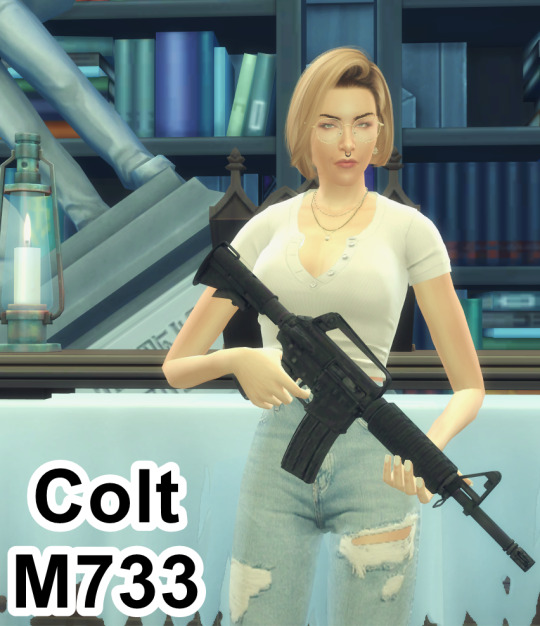
Colt M733 ("Commando")
The Colt Model 733, commonly known as the Colt M733 Commando, is a compact carbine developed in the 1980s as part of the CAR-15 / M16 family. It was designed for special operations, law enforcement, and close-quarters combat (CQC). (Thank you for @r-jayden For the Pose!)
Key Features of the Colt M733:
Short Barrel (11.5 inches)
More compact than the M16A2 (20 inches) and M4 (14.5 inches).
Balances maneuverability and effective range.
Fixed Carry Handle & A2 Sights
Uses M16A2-style rear sights, improving long-range accuracy.
Full-Auto or 3-Round Burst
Available in safe-semi-burst (like the M16A2) or safe-semi-full auto (like the M16A3).
A1 Lower Receiver & A2 Upper Receiver
Mixed features from M16A1 (simpler controls) and M16A2 (better sights & barrel twist).
Flash Hider & Handguards
Uses an A2-style flash suppressor to reduce muzzle flash.
Short round handguards, unlike the triangular ones on early CAR-15 models.
Combat Use & Operators
Used by U.S. Special Forces, including Delta Force, Navy SEALs, and Army Rangers.
Deployed in conflicts like:
Operation Just Cause (Panama, 1989)
Gulf War (1991)
Somali Civil War (1993, Battle of Mogadishu)
Popular among law enforcement SWAT teams.
Legacy & Influence
The M733 inspired the M4 Carbine, which became the U.S. military’s standard service rifle.
Still used by law enforcement, private security, and some military units.
Its compact size, reliability, and firepower made it a favorite for close-quarters combat (CQC).
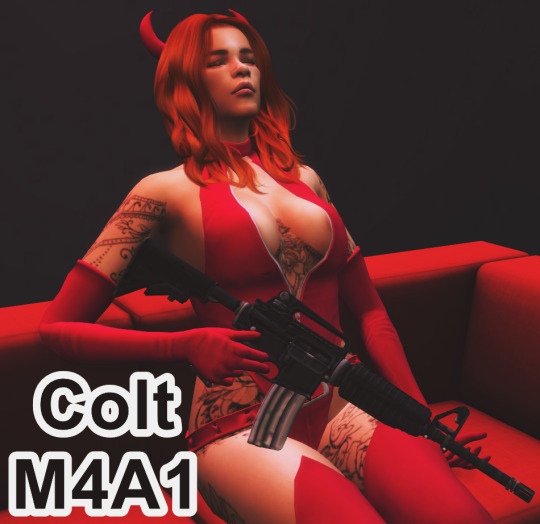
COLT M4A1 Carbine
The Colt M4A1 is a fully automatic, compact, and modular carbine developed as an improvement over the M4 Carbine. It has been the standard-issue rifle for U.S. Special Operations Forces (SOF) since the early 2000s, and it is widely used by military and law enforcement worldwide. (Thank you for @plazasims For Unique Costume!)
Key Features of the Colt M4A1
1. Barrel & Accuracy
14.5-inch barrel (shorter than the M16A4’s 20-inch barrel).
Heavy barrel profile (since 2015) for better durability and accuracy.
1:7 rifling twist, optimized for 5.56×45mm NATO M855A1 Enhanced Performance Rounds.
2. Full-Auto Fire Mode
Unlike the M4 (which has a 3-round burst mode), the M4A1 features full-auto capability.
This makes it preferred for special operations where rapid fire is needed.
3. Modular Rail System
Uses the Knight’s Armament RAS (Rail Adapter System) or Daniel Defense RIS II (used in SOPMOD Block upgrades).
Supports optics, grips, PEQ laser designators, suppressors, and grenade launchers (M203/M320).
4. Flat-Top Upper Receiver
Picatinny rail instead of a fixed carry handle, allowing ACOGs, EOTechs, Aimpoints, and NVGs.
The backup iron sights (BUIS) are removable.
5. Telescoping Stock
6-position collapsible stock, making it adjustable for different users and gear setups.
More maneuverable than the fixed stock of the M16A4.
Combat History & Use
The M4A1 has been the primary weapon of U.S. Special Operations Forces (SOF) since the Global War on Terror (GWOT), replacing the CAR-15, M16A2/A4, and early M4s. It has seen combat in:
Afghanistan War (2001–2021)
Iraq War (2003–2011)
Operation Neptune Spear (Bin Laden Raid, 2011)
Syrian Civil War (2014–Present)
Users:
U.S. Army Special Forces (Green Berets), Navy SEALs, Delta Force, Army Rangers, and Marine Raiders.
Standard issue for U.S. Army and Marines (replacing M16A4 in infantry units).
Used by NATO and allied forces worldwide.
Modernization & Future
The M4A1+ program introduced features like free-floating handguards and ambidextrous controls.
Being replaced in some roles by the Sig Sauer XM7 (NGSW Program), but still widely used.
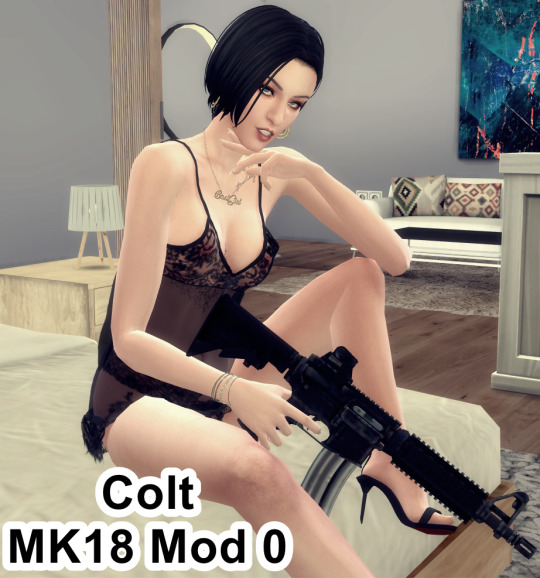
COLT MK18 MOD 0/M4 CQBR
The Colt Mk18 Mod 0 is a compact and highly modular 5.56×45mm NATO carbine, designed for close-quarters battle (CQB), special operations, and maritime missions. Developed as part of the U.S. Navy's SOPMOD program, it is essentially a short-barreled version of the M4A1, optimized for special forces, vehicle crews, and hostage rescue units.
Key Features of the Colt Mk18 Mod 0
1. Ultra-Compact 10.3-Inch Barrel
Shorter than the M4A1’s 14.5-inch barrel, making it ideal for CQB and vehicle operations.
Uses a heavy barrel profile for durability.
Often paired with a suppressor (e.g., Knights Armament NT4 or SureFire SOCOM556-RC) to reduce noise and flash.
2. Flat-Top Upper Receiver (Picatinny Rail)
Unlike earlier Colt carbines with fixed carry handles, the Mk18 Mod 0 has a flat-top rail, allowing optics like:
EOTech EXPS-3 / Aimpoint T2
ACOG TA31 (for mid-range engagements)
PEQ-15 / MAWL Lasers (for night ops with NVGs).
3. Rail Interface System (RIS)
Uses the Knights Armament RAS handguard for mounting:
Foregrips (TangoDown, BCM, Magpul)
Weapon lights (SureFire M600 Scout)
Suppressors and lasers (PEQ-15, DBAL, MAWL)
This early version (Mod 0) still used the KAC RAS, while later Mk18 Mod 1 versions switched to the Daniel Defense RIS II.
4. Full-Auto Fire Mode (Unlike M4)
The Mk18 Mod 0 is select-fire (safe/semi/full-auto), making it more effective in high-intensity CQB situations.
Later models were built with Colt’s M4A1 lower receiver, which shares the same fire control system.
5. SOPMOD Block 1 Compatibility
Issued with SOCOM’s Special Operations Peculiar MODification (SOPMOD) kit, including:
Suppressors (Knight’s Armament NT4, later SureFire SOCOM)
Optics (EOTechs, Aimpoints, ACOGs)
PEQ-15 / AN/PEQ-16 laser/IR systems
Enhanced stocks (LMT Crane SOPMOD Stock, B5 Systems, Magpul CTR)
Combat History & Operators
The Mk18 Mod 0 became the go-to CQB weapon for U.S. Special Forces, particularly Navy SEALs, Delta Force, Army Rangers, and Marine Raiders. It has been widely used in:
Iraq War (2003–2011)
Afghanistan War (2001–2021)
Operation Neptune Spear (Bin Laden Raid, 2011)
Syria & Anti-ISIS Operations (2014–Present)
Other users include:
FBI HRT (Hostage Rescue Team)
DEA FAST Teams
British SAS & SBS
Various European and Middle Eastern special forces
Legacy & Influence
The Mk18 Mod 0 set the standard for modern CQB rifles, inspiring later models like the Mk18 Mod 1 and civilian AR pistols (Colt 6933, Daniel Defense DDM4 PDW, BCM CQB-10).
Even as the U.S. shifts to the XM7 (Sig MCX Spear), the Mk18 remains a favorite in SOF circles due to its compact size, reliability, and versatility.
SPECIALIZED VARIANTS
This Part Will covered the Unconventional Layout Of AR-15 Rifle something that Slightly Deviated with Their Original Mainstream M16 Or M4 Guidelines.
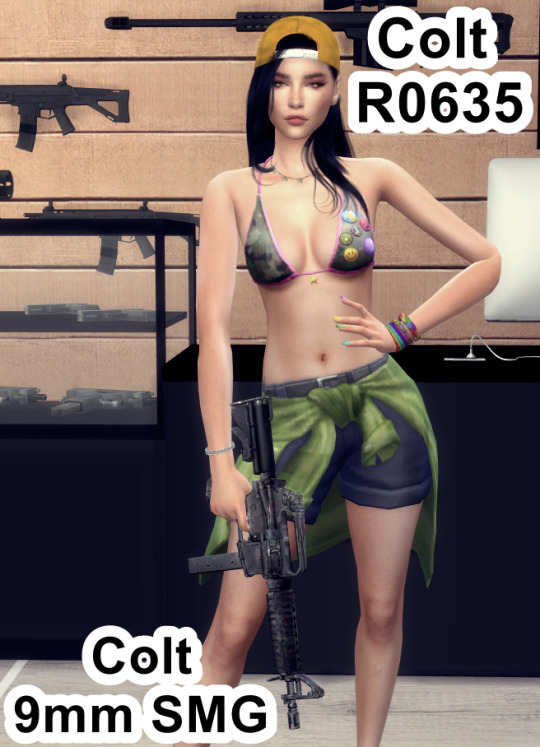
Colt 9mm SMG (Colt RO635)
The Colt 9mm SMG, also known as the Colt Model 635, is a submachine gun (SMG) chambered in 9×19mm Parabellum, designed as a pistol-caliber variant of the M16/AR-15 platform. It was developed in the 1980s for law enforcement, special forces, and security personnel who needed a compact, controllable firearm for close-quarters combat (CQC).
Key Features of the Colt 9mm SMG (Model 635)
1. 9mm Blowback Operation (No Gas System)
Unlike the M4/M16’s gas-operated system, the Colt 9mm SMG uses a simple blowback mechanism.
Lacks a gas tube, gas block, or forward assist, making it simpler and more reliable with 9mm ammo.
2. Shorter 10.5-Inch Barrel
More compact than the M16 (20 inches) or M4 (14.5 inches).
Perfect for CQB, SWAT, and VIP protection.
Often fitted with a threaded barrel for suppressors.
3. 32-Round Stick Magazine
Uses a curved 32-round magazine, similar in appearance to Uzi magazines, but modified for the AR platform.
Feeds from Colt’s proprietary SMG lower receiver, not interchangeable with standard AR-15/M4 lowers.
4. Fixed Carry Handle (A1-Style)
Standard M16A1-style upper receiver, with integrated iron sights and no Picatinny rail (early versions).
Some later versions feature flat-top Picatinny rails for optics.
5. Fire Selector: Safe-Semi-Full Auto (Model 635)
Model 635 (Standard SMG): Full-auto (Safe/Semi/Auto)
Later law enforcement models (RO995, RO699, etc.) have semi-auto configurations.
Combat Use & Operators
Though not widely adopted by the military, the Colt 9mm SMG became popular among:
FBI SWAT & HRT (Hostage Rescue Team)
DEA, ATF, and Secret Service
U.S. Navy SEALs (limited use in the 1980s–1990s before transitioning to MP5s & HK416s)
Foreign law enforcement agencies (e.g., Colombia, Mexico, Middle Eastern special units)

Colt CM901 (Colt Modular Carbine 901)
The Colt CM901 (Colt Modular Carbine 901) is a multi-caliber, modular battle rifle, designed to bridge the gap between 5.56×45mm NATO (M4/M16) and 7.62×51mm NATO (.308 Winchester) rifles. Developed by Colt Defense, it was unveiled in 2010 as a highly adaptable AR-platform weapon for special forces, designated marksmen, and infantry roles.
Key Features of the Colt CM901
1. Multi-Caliber Compatibility (7.62 NATO & 5.56 NATO)
Primary caliber: 7.62×51mm NATO (battle rifle performance, extended range).
Can quickly convert to 5.56×45mm NATO by swapping the upper receiver and using a magazine adapter.
Compatible with standard AR-15/M4 uppers, making it one of the most versatile battle rifles on the market.
2. Monolithic Upper Receiver
The CM901 features a one-piece, free-floating monolithic upper receiver, improving:
Accuracy (more rigid than two-piece designs).
Optic mounting (full-length Picatinny rail).
Accessory attachment (foregrips, lasers, bipods).
Provides a seamless rail system similar to the LMT MWS and KAC SR-25.
3. Shorter 16-Inch Barrel (Battle Rifle in a Carbine Package)
Compact for a 7.62 NATO rifle, giving it more maneuverability than traditional battle rifles like the M14 or SCAR-H.
Available in various barrel lengths (13”, 16”, and 20”) for different mission needs.
4. Ambidextrous Controls
Features ambidextrous safety selector, magazine release, and bolt catch, making it ideal for left-handed shooters.
A big improvement over standard AR-10 platforms, which typically lack full ambidextrous controls.
5. Battle-Proven Reliability
Uses a reinforced lower receiver to handle the power of 7.62 NATO rounds, while still functioning smoothly with 5.56 NATO conversions.
Built to military durability standards, making it rugged and reliable for combat use.
Why the CM901 Didn't Fully Replace the M4/M16
Heavier than standard M4 carbines (even with a 5.56 upper).
7.62 NATO recoil & ammo weight limit its role in CQB settings.
SCAR-H and HK417 were preferred for SOF battle rifle roles.
Military demand for a dedicated 7.62 platform (SR-25, M110) outweighed the need for a modular hybrid.
#the sims 4#the sims 4 custom content#ts4#ts4 cc#the sims 4 military#the sims 4 cc#ts4cc#sims 4#the sims 4 gun#ts4 gun#life is strange#life is strange rachel#life is strange chloe#chloe price life is strange#life is strange max#ts4 military#ts4 download#ts4 cas#m16#m16a2#m16a1#colt#ts4 screenshots#ts4 custom content#the sims cc#american#assault rifle#the sims 4 weapon
17 notes
·
View notes
Text


M16a2
#m16a2#m16#m16a1#5.56 nato#5.56x45mm#5.56mm#223#ar 15 rifle#ar15porn#ar15build#chicks and guns#girls with guns
4 notes
·
View notes
Text
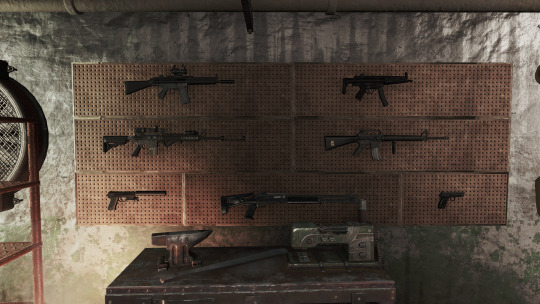
29 December 2289 / Bullet Heaven
Y'all know I love a good gun wall.
#fallout 4#fallout#fallout 4 oc#fallout oc#character rp#fallout 4 mods#fallout 4 modding#fallout 4 modded#gearposting#heckler & koch#h&k#hk33#hk53#hk mp5#ar 15 rifle#mk12 special purpose rifle#mk12 spr#m16a2#m16a3#benelli#m4#m1014#sig sauer#sig p220#USP#mk23#mk23 socom#metal gear solid#suppressor
5 notes
·
View notes
Text




Which Will You Choose?
Romania's PM md.63 AKM (WASR 10/63)
America's M-16A2 (AR-15A2 HBAR)
Debating between the AR and AK platform is pointless. Just get both and be happy.
#wasr#wasr 10/63#PM md.63#ak#akm#ar 15#m16a2#M-16A2#eugene stoner#mikhail kalashnikov#ak vs ar#retro
4 notes
·
View notes
Text

Object OC thing????????????????? Idek man..
My mind is full of the wackiest things.
4 notes
·
View notes
Video
youtube
The Worst Service Rifle Upgrade; The M16A2
1 note
·
View note
Text





AIM-1/DLR or PAQ-4C?
I personally do like the light and streamlined setup of the PAQ But the AIM-1/DLR is more solidly mounted and more interesting to look at.
#oldschool gear#delta force#vintage tactical#gangster grip#car15#colt ar15#colt 723#m16a2 carbine#carry handle#carry handle mount#aimpoint 5000#paq 4c#aim1d laser#sfodd#cag#retro ar#retro rifle#clone rifle
33 notes
·
View notes
Text
I used the fuck out of it when I was shooting the old A2s with the shitty aluminum mags of questionable spring strength. Once we switched to A4s and PMAGs, the only time I ever used the forward assist was when shooting blanks.

170 notes
·
View notes
Text
RFQ (Request for Quote) for Fanfic Illustration Project
Update: I have found an artist! Thanks to all who applied.
Hello! I am a fanfic author looking to commission 6 illustrations to appear in an upcoming fanfiction. My tentative/negotiable budget for this is $1650 USD or $275/illustration. I wish them to be done by 24th September. I am looking for illustrations that are fully shaded, and in color, suitable for appearing inline both online (via AO3) and in print in B&W. I am an amateur fannish creator, and this is the first time I've ever done something like this, and have no contacts to which to rely upon. As a result, I'm also offering a $50 finders fee for any good-faith tip, recommendation, or referral that ultimately leads to a successful agreement.
About the project:
Nature of Work/Quality Requested: Each illustration will involve two canon Stargate SG-1 characters that require, shading, detailing, and coloring. Each illustration also requires a background that effectively communicates the scene geography (ie, where the characters are in relation to eachother and their immediate surroundings). However, generally, the backgrounds do not require complicated shading and detailing as long as they get across the general idea - with the exception of a landscape background for one of the six illustrations. The backgrounds are: medical lab, briefing room, daylight forest, hillside overlooking river, underground cave.
Fandom: This project deals with the Stargate SG-1 fandom, and the characters of Janet Fraiser, Jonas Quinn, Samantha Carter, and the Goa'uld Nirrti. Someone familiar with this fandom would be preferred, but if you are not, substantial high quality references will be provided.
Controversial/Squicky Elements: These requested illustrations do not involve any kind of erotica or ongoing/imminent violence/gore and are SFW. However, of note, a few of the desired illustrations require an accurate reproduction of automatic firearms typical of Stargate SG-1 (specifically, the M16A2 and the MP5, references will be provided), and one of the desired illustrations involves an injured and bloodied person.
Revisions/Alterations requested? Due to the expedited nature of the project (just under two months to finish), I don't expect there to be time for any significant alterations. All I would request is a sketch copy of each illustration before major detail/shading/color work is undertaken, so I can verify the scene geography and major components are correct. If there is time, I may pay extra for alterations should I want them.
How you will be credited:
In-story, online: Your name and a hyperlink to your website/social/portfolio (as desired) will be attributed in the author's notes of the chapters in which your illustrations appear. Your name will also appear at at beginning/foreward, credited as "Illustrator"
In-story, in print: Your name and printed URLs/@s will appear in the beginning or the end of the story, at your choice, credited as "Illustrator"
In other situations, online, e.g. social media posts: A named link to your webside/social/portfoilio (As desired)
Nature of product+license I am intending to purchase:
In general, high quality sources I can freely distribute, and which other can freely redistribute (so long as you remain attributed, and the following terms are attached). Specifically, I am looking for:
Source quality without visible watermark
Time-limited right of first publish: You will withhold publishing copies of the commissioned works on your own socials/website until the final fanfic is posted, or the date February 1st, 2025, whichever is earlier.
A non-exclusive, royalty-free, worldwide, perpetual and irrevocable license with the following terms:
In general, unlimited noncommercial reproduction with attribution.
Limited derivative works, including, color re-grading, cropping, addition of titles or text bubbles, extraction of individual elements without modification (e.g. characters), for the purposes of creating covers, memes, compositions, promotional material, and general shitposting.
Sublicensible without penalty under identical terms, for the purposes of allowing others to distribute the story with the illustrations intact, so long as attribution is preserved, a copy of these terms provided, and no cash or other cash-equivalents exchanged.
How you will be paid:
I am willing to pay via Pay Pal (G&S), Bank wire, CC payment to online shop, Bitcoin/Monero or any crypto listed on Bitstamp supported by Ledger. I am willing to sign up for any online service that does not have onerous verification requirements, as long as such service does not require the use of a proprietary app that can only be installed on a smartphone.
Payments will be in installments as progress is made, or via escrow at the artist's request.
Price negotiable?
Yes. The listed budget is what I believe this project is worth based upon my very limited knowledge and experience, and the money I have available to pay. As the title suggests, please send in your own quote as you feel is fair compensation for your labor. However, cards on the table, price will be a significant factor when discriminating between bids and I may reduce the scope of the project rather than incurring cost overruns.
Is the deadline soft or hard?
Hard. I need the illustrations by the given date for printing in order to give a copy to someone I know (it's a surprise).
How can I contact you?
Please direct all inquiries to [email protected]. If you wish to make a bid, please include the following information.
Your tentative bid, in converted from your currency to United States Dollars
Your estimated lead time
A portfolio of recent work, with at least a few examples of the quality you are willing to work at for the given price.
Any additional stipulations or limitations the listed terms that you wish to request
Whether or not you are familiar with Stargate SG-1
Who you were referred by, if anyone
Your timezone
Whether you would prefer discord or signal for real-time communication
97 notes
·
View notes
Text
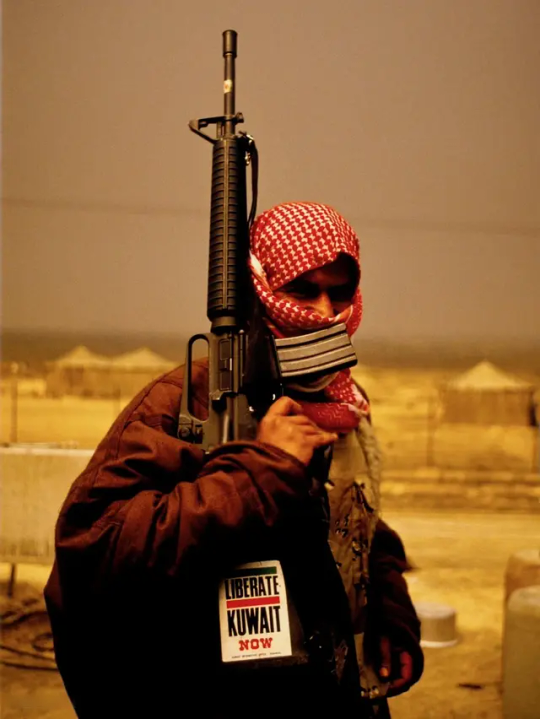
Kuwaiti resistance member armed with an M16A2 stands at a roadblock on the main highway. March 1991
52 notes
·
View notes
Text





Croup Manor / 20 July 2289
Responded to a call about some ferals in Nahant wandering into secure area; arrived to a force of Rust Devils massing for an attack in the police department. After dispatching them, fought alongside security forces until just before dawn, repelling the attackers with three friendlies KIA. Looking to reevaluate the firing plan here.
Clockwise from top left: a recent transfer stands watch on the main access road; a provisioner inspects his pack Brahmin before beginning his rounds; two reformed gunners, the left armed with an M16A2, glare at me; Declan, the resident machine gunner and NCO, poses with his M249 SAW by a dead Rust Devil (not pictured); SMT-0 waiting to board a Militia Vertibird, designate "Surfin' Bird."
#fallout 4#fallout 4 mods#fallout 4 modding#fallout 4 modded#fallout#gunner#preston garvey#had-casualties#settlement-attack#AK-101#AKM#M9#beretta#92FS#M16#M16A2#M249 SAW#FN Minimi#Minimi#SAW#G36#TK36V#settlementposting
2 notes
·
View notes
Text
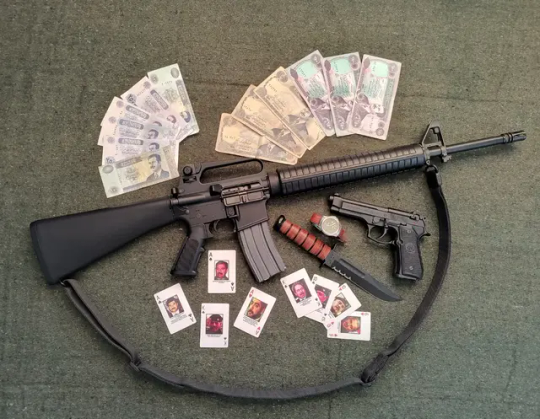

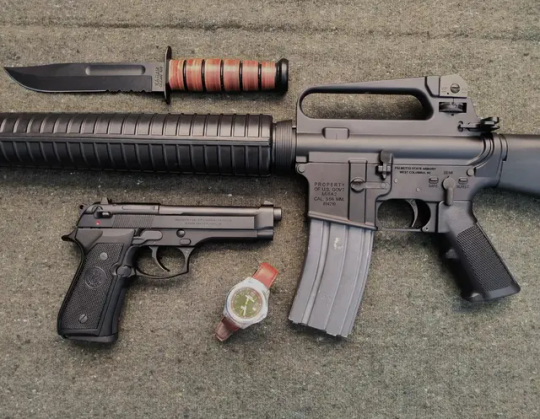
"The Invasion"
At the start of the Iraq war, my father was an old man by Marine standards. An aging Gunnery Sergeant at the end of his 20 year career who "celebrated" his 38th birthday in the combat zone during his six month deployment. The lead-up to the war had been shrouded in secrecy, my father being one of the select few NCO's briefed on the upcoming invasion as early as April of 2002. On March 20th, 2003, he and the other men of CSSB-12 of the 1st Marine Expeditionary Force out of Camp Pendleton, California, were amongst the first American servicemen to cross from Kuwait into Iraq as the US launched a lightning campaign to decapitate the Ba'athist regime. The invasion moved with such speed and ferocity that my father was awake for three days straight at the start of the war.
My father would first encounter enemy fire during the Battle of Nasiriyah. He vividly remembers driving passed the burnt, mangled remains of the Marine AAV destroyed in the now infamous friendly-fire incident by USAF A-10's. He crossed paths with another Marine detachment, MWSS-372, exiting the city, whom he described as "all shot to hell." It was here where the highly-mobile CSSB-12 would link up with LAV's and additional infantry as they began the grueling, weeks-long journey out of Nasariyah through Al-Shatrah, An-Nu'mānīyah, and Al-Kut as their unit pushed further into Iraq, encountering armed resistance from both the Iraqi Army and Fedayeen Saddam units along the way. Luckily, most Iraqi units they encountered were heavily demoralized, and wisely chose to surrender without a fight.
It was at Al-Shatrah where my father would see intense combat and lead Marines under fire when a mix of Fedayeen and civilian irregulars ambushed them at close-range, close enough where his M9 service pistol was deployed, and several magazines emptied. My father doesn't like to go into detail, but he does say this: "They had every chance to give up, but they didn't. Those guys that tried to whack us? None of them are still breathing." It took him over 18 years to tell me the story behind his combat action ribbon.
#gwot#iraq war#united states marine corps#usmc#m16a2#beretta 92fs#invasion of iraq#history#marine corps
4 notes
·
View notes
Text


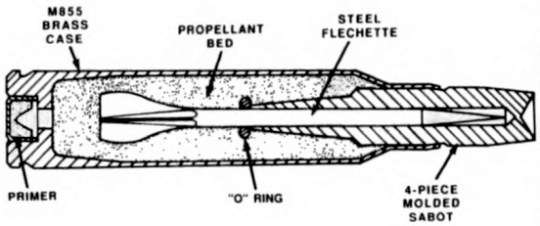

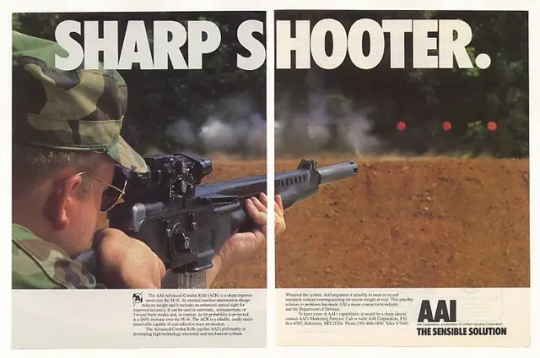
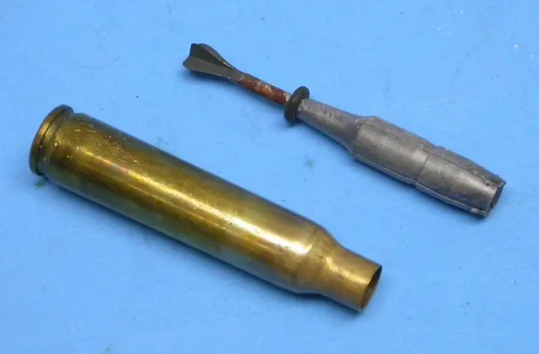

"The AAI ACR (originally designated as the AAI AIWS) was a prototype assault rifle developed for the Advanced Combat Rifle program.
In Phase III of the program, it was one of the top four prototypes, alongside the Heckler & Koch ACR, Steyr ACR, and Colt ACR, while two other prototypes were dropped earlier on in the program before reaching Phase III. Ultimately, none of them proved to have 100% improved performance over the M16A2.
One unit is on exhibit with the other three ACR Phase III prototypes at the National Infantry Museum in Fort Benning, Georgia. Another unit, serial number #001, is in the collection of the Behring Center National Museum of American History." Source
30 notes
·
View notes
Text

The tulkarem cell of the al-aqsa martyr's brigade youth of revenge and liberation, fight against zionist invasion from pre-prepared firing positions, using american m16a2's likely originally sold to the pa security forces by the americans before their users defected
46 notes
·
View notes

